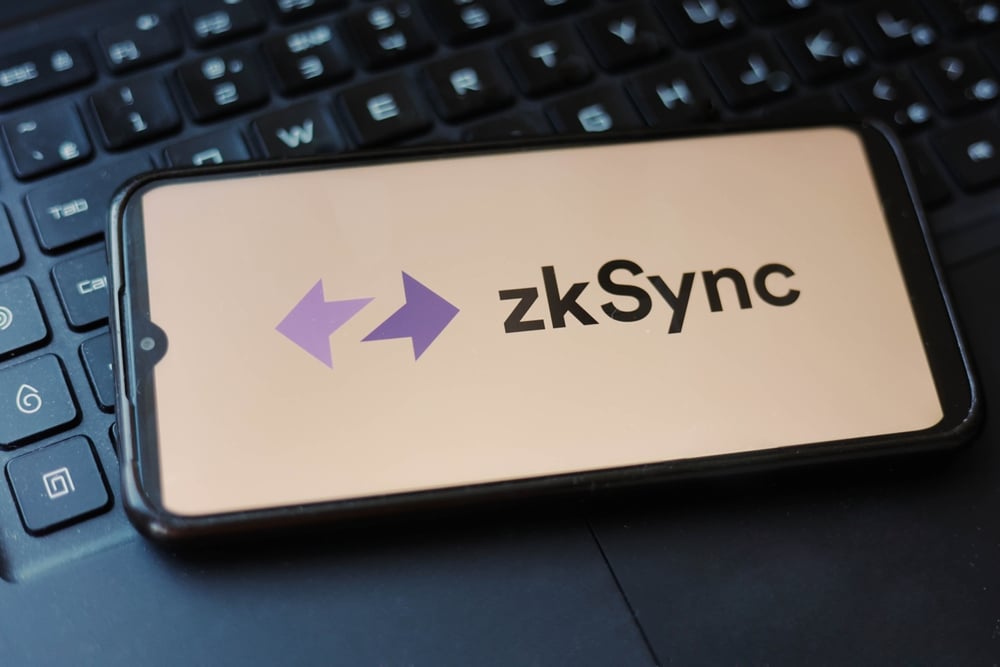
A Detailed Guide to Understanding the Bridge to zkSync
Discovering the step-by-step process of transferring crypto to and from zkSync guarantees easy and seamless transactions.
Ethereum, the major blockchain for decentralized applications (Dapps), encounters a significant scalability issue. Transaction fees have risen significantly with rising user adoption, deterring mainstream utilization.
zkSync has emerged as a zkSync solution, seeking to solve the issue Imminently while maintaining Ethereum’s decentralization and security.
ZkSync Explained
This zero-knowledge (ZK) rollup scaling solution is developed on the Ethereum blockchain. It exploits ZK-proofs, a cryptographic tactic, to process transactions off-chain (layer 2). While doing so, it inherits Ethereum’s security features (layer 1).
zkSync is Matter Labs’ invention, which was made possible by a team comprising zealous blockchain entrepreneurs and engineers. Alex Gluchowski, Matter Labs’s co-founder and chief executive officer, is a famous figure in the Ethereum community who is known for his role in scaling solutions.
Matter Labs’s robust technical know-how and commitment to decentralization are vital to zkSync’s success. Further, a conglomerate of renowned investors, including Sequoia Capital, Andreessen Horowitz, and Balaji Srinivasan, strengthen zkSync’s development.
The investors offer critical financial resources and strategic leadership, pushing zkSync’s growth trajectory.
A zkSync Transaction’s Global Workflow
zkSync functions by bundling multiple transactions into one batch, considerably cutting gas fees for each transaction. Transactions are processed effectively on layer 2, easing the load on the primary Ethereum network.
zkSync produces cryptographic proofs verifying the processed transaction’s validity without disclosing their details. Afterwards, the proofs are submitted back to the Ethereum mainnet for confirmation.
The approach provides various benefits, including reduced fees, scalability, security, and improved privacy.
zkSync boasts considerably quicker transaction processing than layer 1s, potentially handling several transactions every second. Batching transactions minimizes gas fees, making them cost-effective for users.
zkSync proofs hide transaction information while confirming their validity, providing privacy on the public blockchain.
zkSync inherits Ethereum’s security since the validity proofs depend on the underlying consensus mechanism of the blockchain.
What Makes zkSync Unique Explained
zkSync uniqueness in the L2 scaling landscape is linked to its special attributes. It was one of the initial ZK-rollups to unveil a manner, offering it a head start in relation to user adoption and development.
Different from some ZK-rollups, zkSync shuns use an application-specific trusted setup (AS-TST), abolishing a possible centralization point. AS-TST refers to a setup process for specific cryptographic systems, mostly ZK-proofs, where a trusted group produces classified parameters critical to the system’s security. Nevertheless, the parameters cannot be utilized to break the cryptography.
zkSync uses ‘Fractal SNARKs,’ a novel strategy, to produce validity proofs. This allows them to scale effectively with a rising number of transactions.
The innovations have evoked considerable interest from the developer community, making zkSync a leader in the scalable Ethereum race. Besides, zkSync has experienced remarkable growth since its mainnet unveiling in November 2020.
As of May this year, it has processed many transactions, showcasing its actual-world utility. The value of crypto assets locked within has risen gradually to more than $150M across 107 native protocols, showing confidence in the platform.
A flourishing developer system is arising around zkSync, with several projects and decentralization applications incorporated with the platform.
Final Thoughts
zkSync uses the ZK-rollup technology to prioritize general-purpose smart contracts and interoperability with current Ethereum tooling. On the contrary, Starknet is a separate layer-two scaling strategy that uses zk-STARK proofs to offer improved scalability.
Editorial credit: Gleb Usovich / Shutterstock.com




